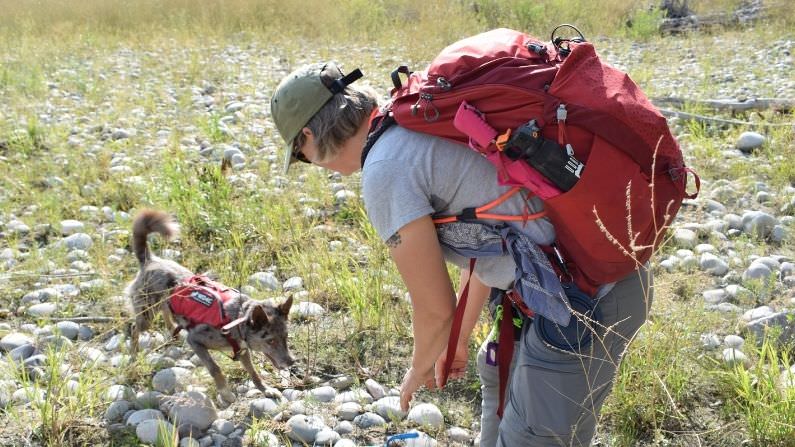Aimee Hurt walked along the Snake River next to Highway 22 on Aug. 27, surveying the plant life on the banks with Fenton, a mixed-breed dog with two different colored eyes. Fenton wore a bell so Hurt could hear him as he scrounged around in the thick brush.
Fenton and Hurt, co-founder of Working Dogs for Conservation, were searching for perennial pepperweed and saltcedar: two invasive plant species currently present along the Snake River. Fenton’s been through rigorous training to get to this position, sniffing samples of the plants he’s looking for over and over and learning what to do when he discovers something that matches that scent in the field.
“They are searching for something with scent. They’re just using a completely different toolbox than we are,” Hurt said.
If Fenton or another one of Hurt’s three dogs on this project find something, Teton County Weed and Pest will go back to that area with human teams for a more comprehensive search. It’s a system that keeps invasive species like saltcedar at bay, according to Lesley Beckworth, landowner program coordinator for the Teton County Weed and Pest District.
“It’s called saltcedar because of the way it leeches nutrients from the soil. It leaves sort of salty residue and makes it the soil uninhabitable for other native species, and we don’t want that on the Snake,” Beckworth said. “So, as soon as we found one plant, it became a mission every year to go through and check.”
The dog teams are a critical part of that mission. Last year, they discovered 30% more perennial pepperweed plants, which can also take over an area if left unchecked, than their human counterparts. It’s just another way Weed and Pest is trying to protect an ecosystem sacred to so many Jackson Hole locals.






